The Common
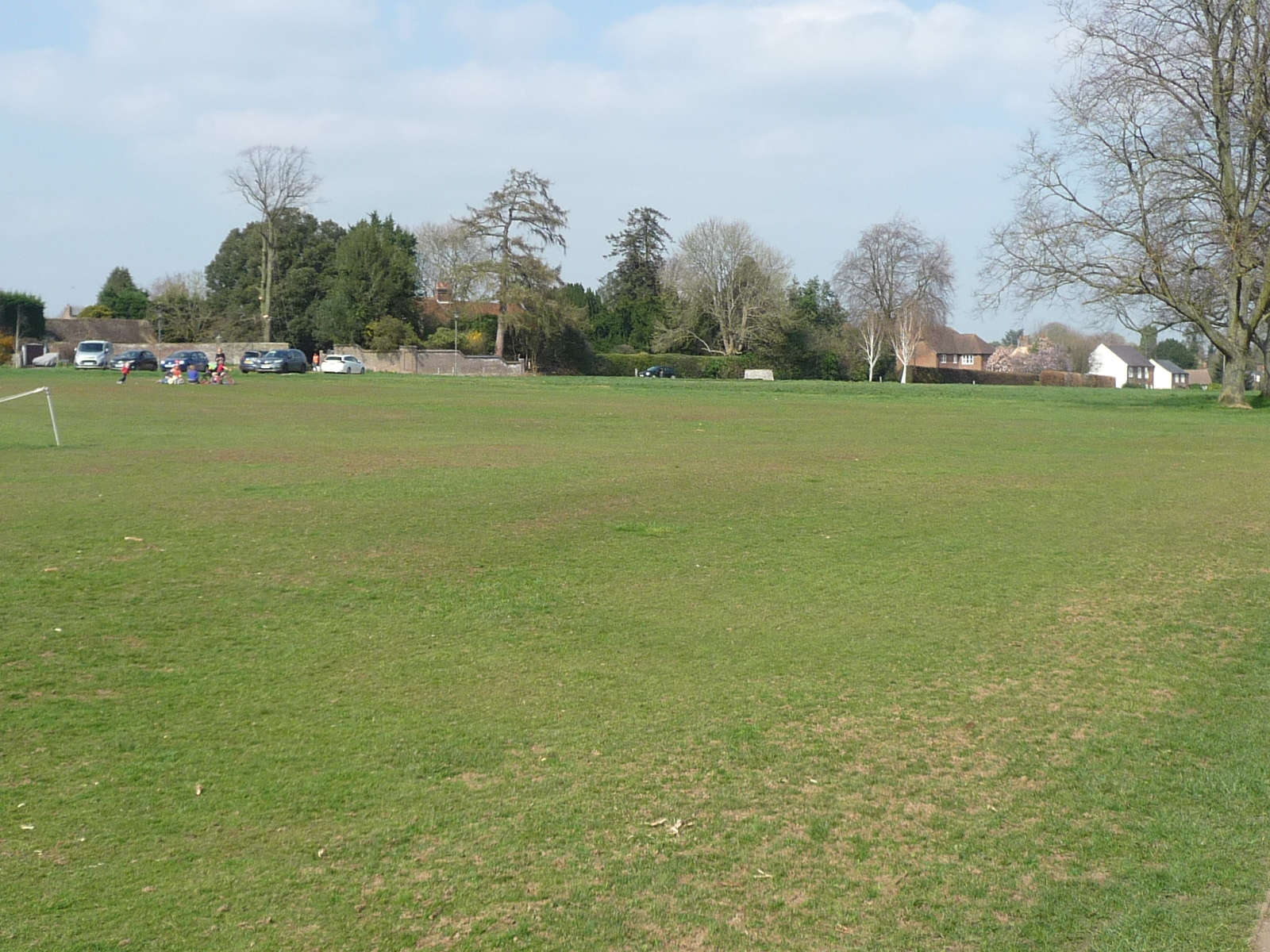
Redbourn Common is a very large open space in the middle of the village. It links the High Street with the old village centre at Church End. It has always been a very important part of village life. At the beginning of this century it was used as grazing for sheep and goats, geese and duck roamed freely and people hung their washing there to dry. It was also not uncommon to see horses enjoying the rich grass.
Now it is used every week in the summer for Cricket Matches, joggers, cyclists, dog walkers are a common sight. There is a new adventure play area, people come down to the Common to picnic and party.
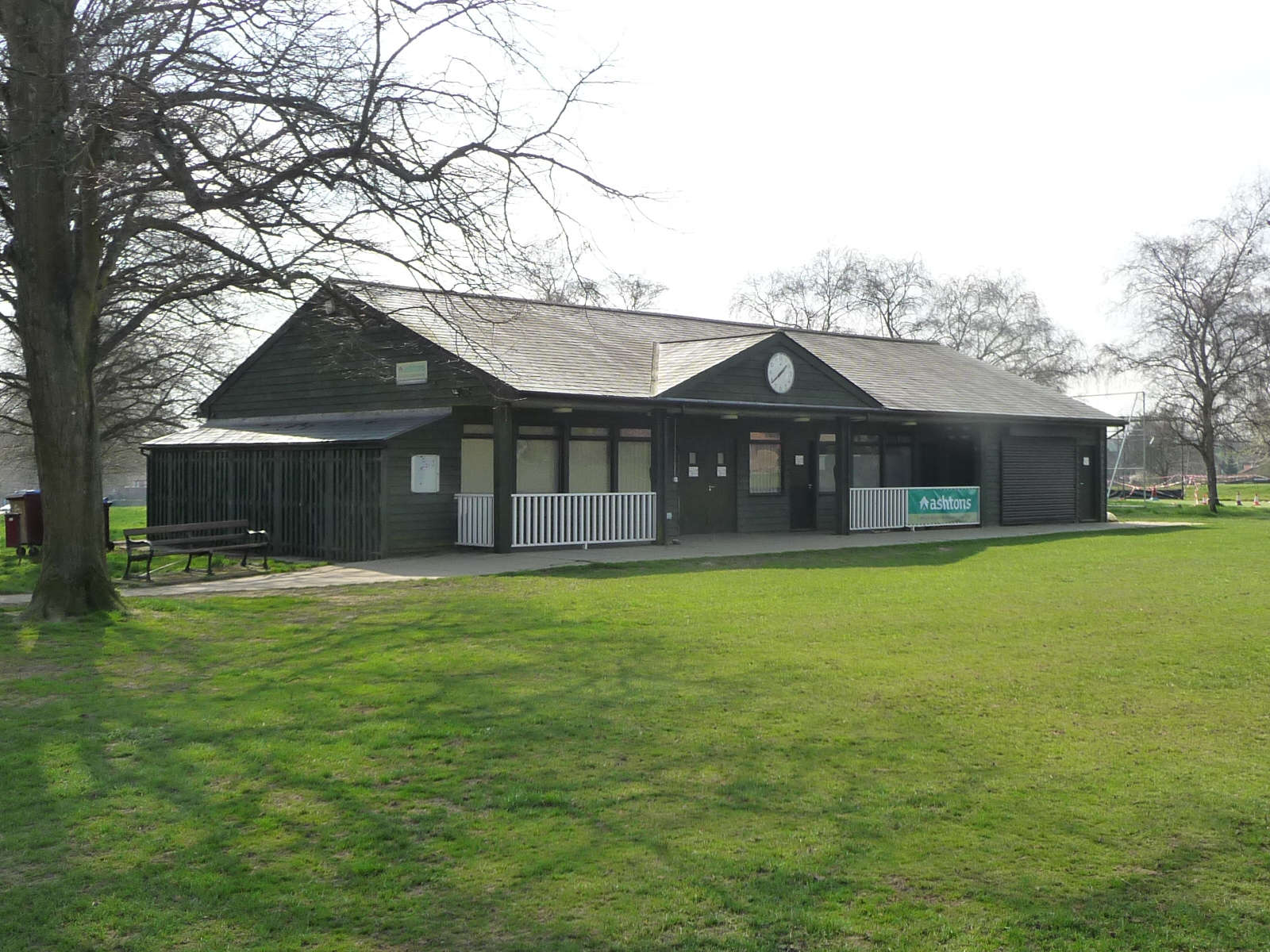
The area was formerly known as ‘The Heath’. It was owned by the Lord of the Manor ( the Abbey), but the villagers held ‘Common Rights’ that meant that they could put their animals to feed on the grass, they could cut peat of turf (turbary) and had the right to access it generally. The rights of the villagers were protected by St Albans Abbey just before Henry gave it to Princess Elizabeth. She leased it to Sir Richard Reade and he used the stones from the Priory to build Place House on the raised site behind the current parish centre. It is mentioned in 1628 when Charles, then Prince of Wales transferred it to the City of London in lieu of a debt. They then leased it to Henry Meautys of Gorhambury. He went on to purchase the land in 1642. It continued it the hands of the owners of Gorhambury until 1931 when the Crown Commissioners took it back to the Crown, but the Common was still controlled by the Earls of Verulam. The Parish Council was responsible for the upkeep of the land and in 1947, it was officially handed over by the Earl of Verulam to the Parish Council in a ceremony at the old cricket pavilion. Gertrude Peake spoke on behalf of the villagers
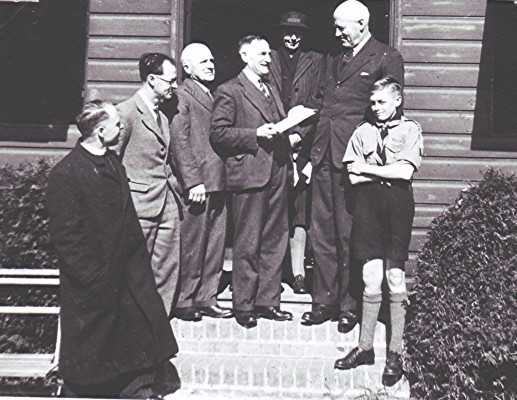
‘The village had always possessed one of the most lovely commons in the country’ and the Council had to ‘ take the greatest care of its privileges and always be jealous of the rights of the common and let it not be spoilt in any way’
Cricket on the Common
It is debatable when the first match of cricket was played on the common in Redbourn – perhaps 1666. Matches continued through the 17th and 18th centuries. There was certainly a cricket team in St Albans from 1666. Redbourn C.C. dates itself to 1823.
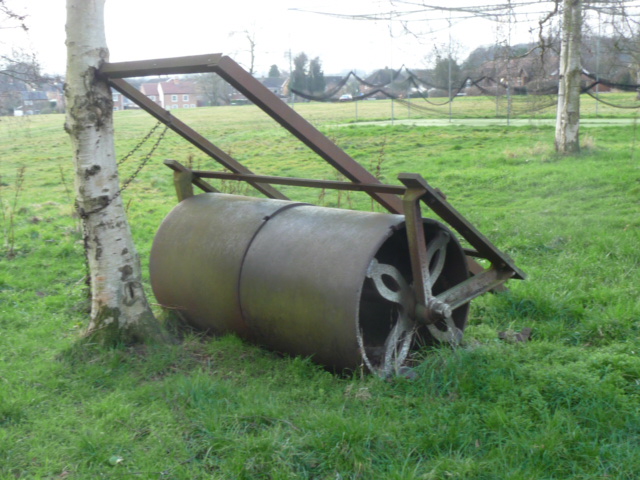
Sometimes referred to as the ‘Father’ of English cricket, Beauclerk (1773–1850) was an outstanding but controversial English first class cricketer for 35 years from 1791 to 1825. He was the great-great grandson of Nell Gwynn and Charles II and the fourth son of the fifth Duke of St Albans. He had two parishes – Redbourn and St Michaels but hardly ever visited either, letting his curates run the churches and this was at a time when the village chapels were becoming more and more popular.
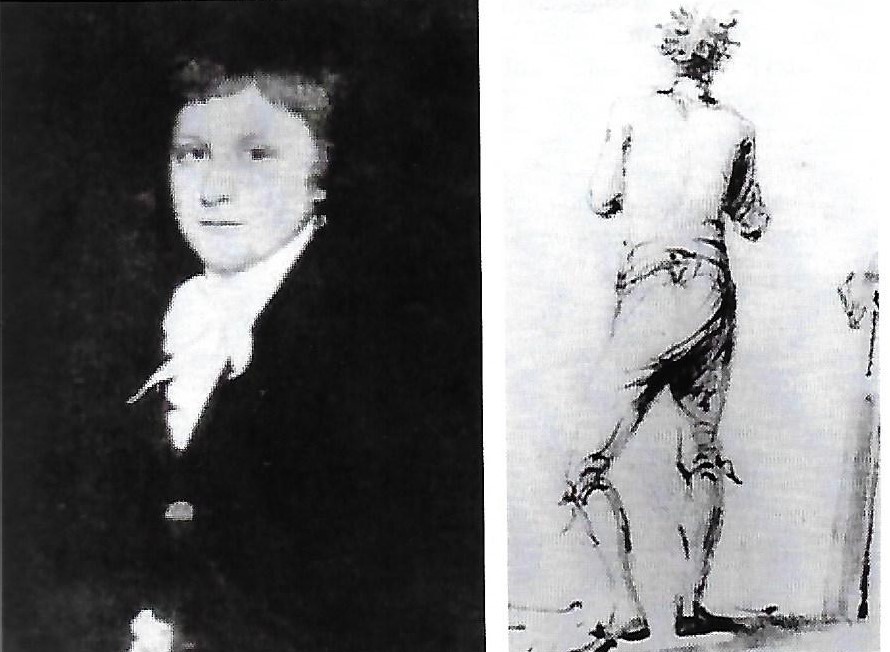
Lord Frederick Beauclerk. Vicar 1827-1850
Beauclerk was a right-handed batsman and a right arm slow underarm bowler and was a recognised all-rounder. He generally fielded at slip. His career spanned the 1791 to 1825 seasons. He was 5 ft 9 in in height and weighed between 11 and 12 stone.
While playing for Cambridge University, his talent as an accurate slow bowler was spotted by the Earl of Winchelsea who invited him to play for
Marylebone Cricket Club. Beauclerk’s first-class debut was for
M.C.C. v Gentlemen of Kent in June 1791. Beauclerk was “now but 18 years of age”. He played two first-class matches in the 1791 season but then was unavailable until the 1795 season while he completed his studies. He then became a regular and prolific player.
Having started as a bowler, he developed his batting skills and became better known as a hard-hitting batsman, but remained a genuine all-rounder. Beauclerk played for the Gentlemen in the inaugural and second Gentlemen vv Players matches in 1806. Beauclerk scored 170 and set the world record for the highest individual innings in all forms of cricket that lasted until 1820 when it was beaten by a score of 278.
Beauclerk was the second president of M.C.C. in 1826, playing for its team in minor matches while in office and into his 50’s. Thereafter, he was a regular attendee at Lord’s to watch matches and was occasionally involved in them as a patron. A “persistent symbol of insensitive autocracy long after his retirement”, he was invariably accompanied by a “nasty, yapping dog” whereas the rule for everyone else was: “No dogs allowed”
Many believe that it was due to his influence that the game of cricket survived and became the national game. There is no evidence to suggest that he ever played in Redbourn, but his connection to the village is undeniable. However, while he was still vicar, the M.C.C. did play on the Common against the Redbourn team, winning by seven wickets.
By the end of the 19th century, the team was well established, winning the Hertfordshire County Cricket Challenge Cup three times in a row, and thus still have the Cup. As shown in the photo below, facilities were very basic, a tent was erected for matches (this cost £9 in 1898).
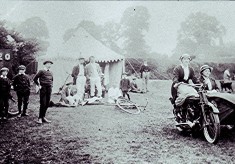
Early Cricket
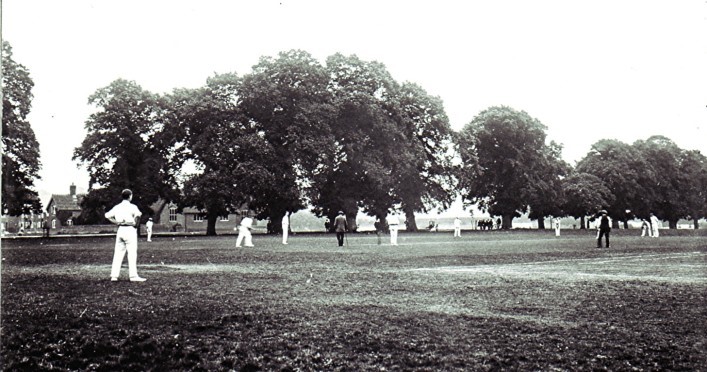
This photo is from 1910. During the 20’s and 30’s the village had strong teams and Flamsteadbury Farm gave the club a heavy roller, which was pulled by a horse. In 1932, the club was given permission to put up a new wooden hut on the North side of the pitch. It can be seen clearly in the next photo.
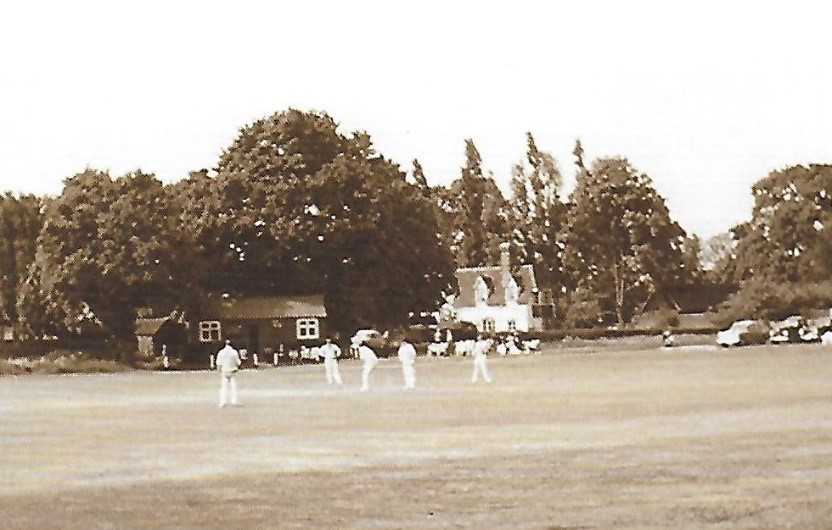
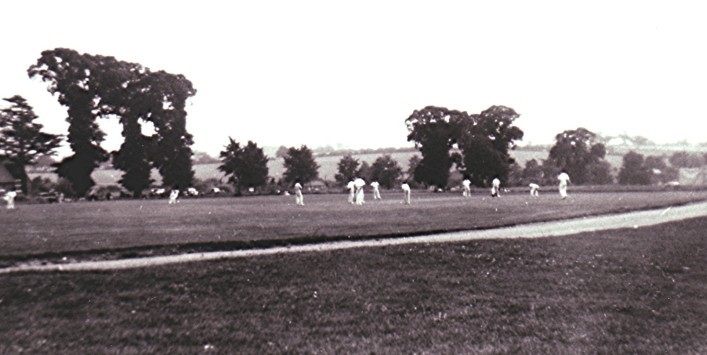
1950 A view of the cricket field from the old pavilion on Redbourn Common, with the avenue elms.
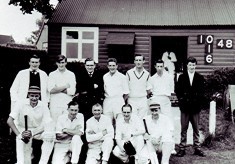
1950 A view of the cricket field from the old pavilion on Redbourn Common, with the avenue elms.
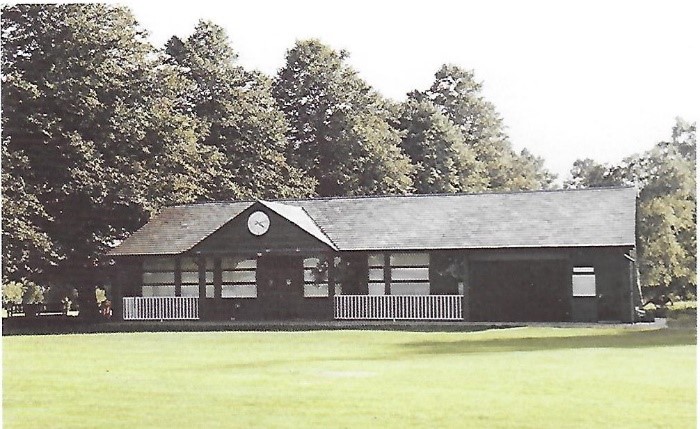
Football
Football was played on the Common since the 1880’s but there was never a permanent pitch marked out or any changing facilities. They also played in Silk Mill meadow, the Park, Dunkley’s meadow at Scout Farm, Long Cutt Meadow, and at the back of St Luke’s. It was not until the 1980’s that they found a permanent home at the Leisure Centre.
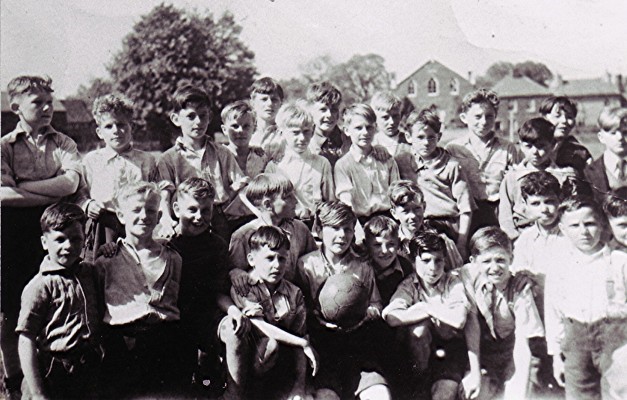
Tennis
The photo below shows tennis on the Common but it was also played in other locations before Redbourn Tennis Club emerged.
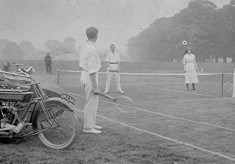
Golf
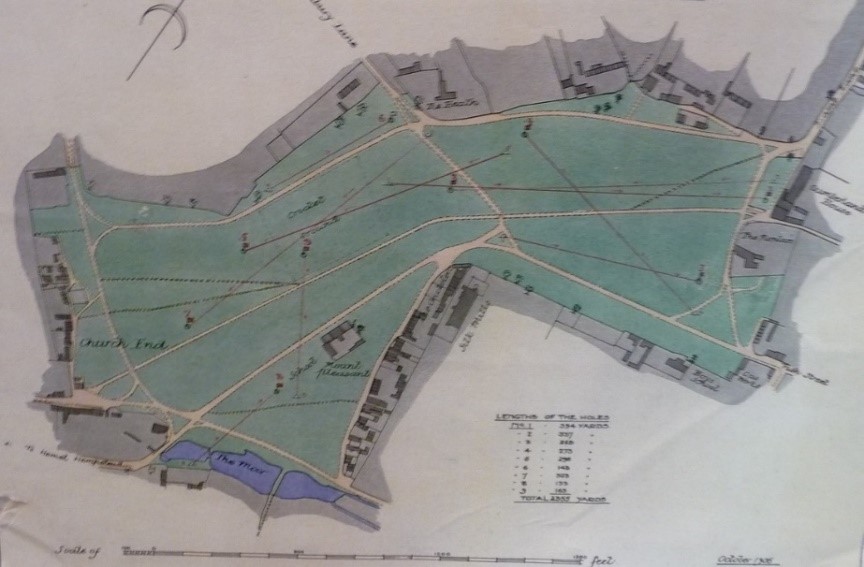
The golf course opened in 1903 and was nine holes. This photo, is from 1910 and shows play from a difficult lie near The Moor.
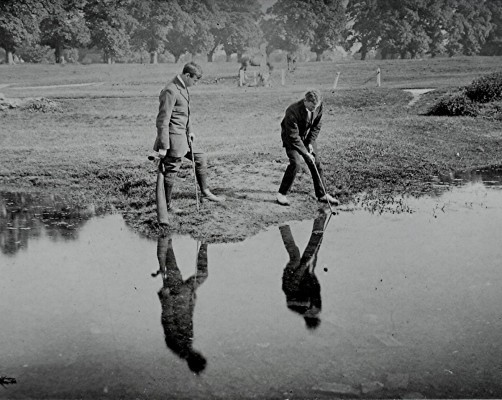
Celebrations
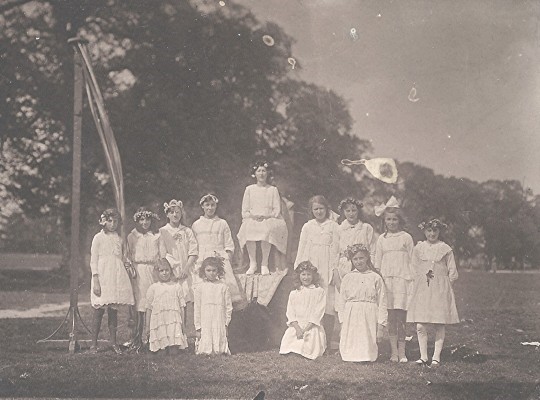
First maypole celebration in 1918. Miss Jenny Apthorpe was Headmistress of Redbourn Girls School, and introduced the first Maypole celebration.
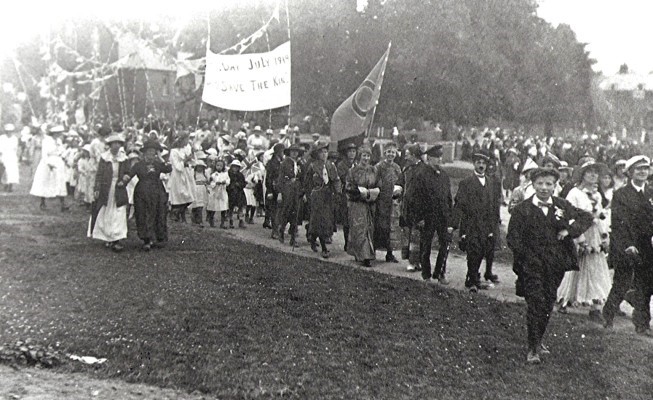
This peace celebration parade passes near the Wesleyan Methodist Church at North Common, Redbourn, 1919.
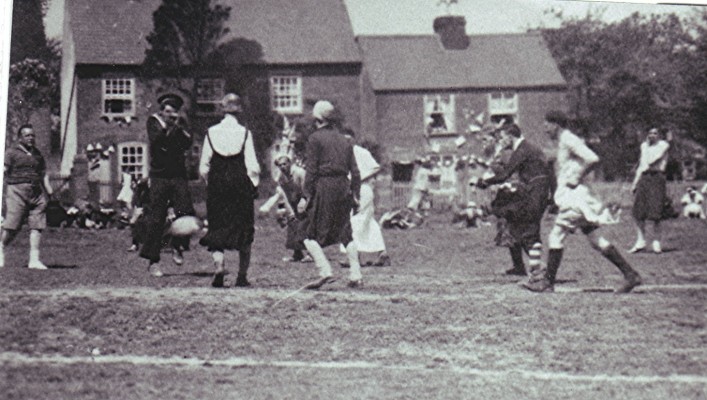
A comic football match was held on a pitch at North Common, Redbourn to celebrate the Jubilee of King George V and Queen Mary.1935.
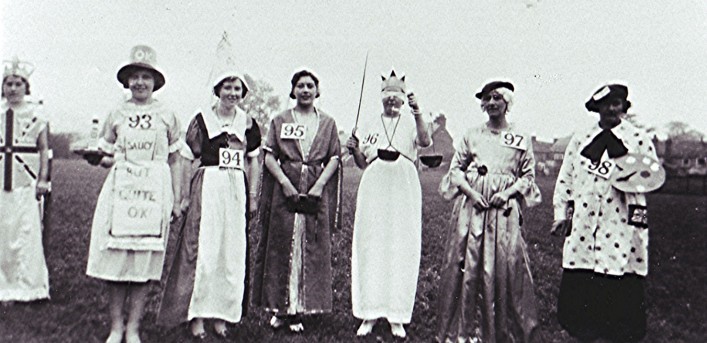
A Coronation Carnival in 1937.
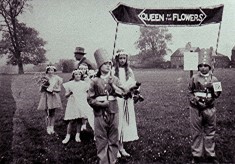
Girls from Lybury Lane, taking part in the Fancy Dress Parade in the Silk Mill Meadow at the rear of East Common, to celebrate the Jubilee of King George V and Queen Mary.
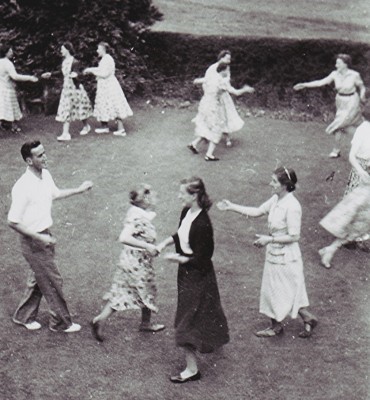
Country dancing was a popular pastime for all ages in Redbourn, c.1951
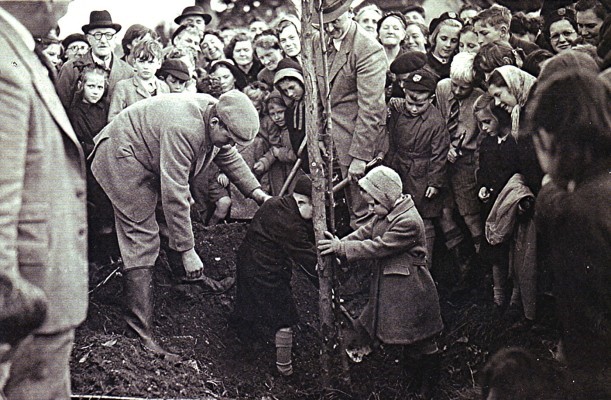
Children helped with this tree planting project at East Common, Redbourn.1952
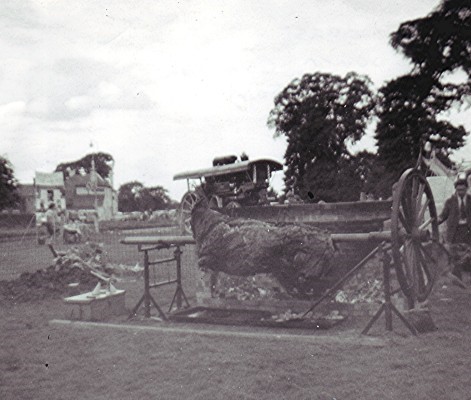
A scene from the Ox Roast on Redbourn Common at the Elizabethan Fayre, 1977.
When the two annual fairs came to the village, the Common probably hosted other ‘sports’ – cock fighting and bare knuckle boxing. The Moor along the south side of the Common was often frozen over and the locals would ice skate there. More recently, there have been large free firework displays on the Common around November 5th, with contributions going towards local charities.
The Hunt
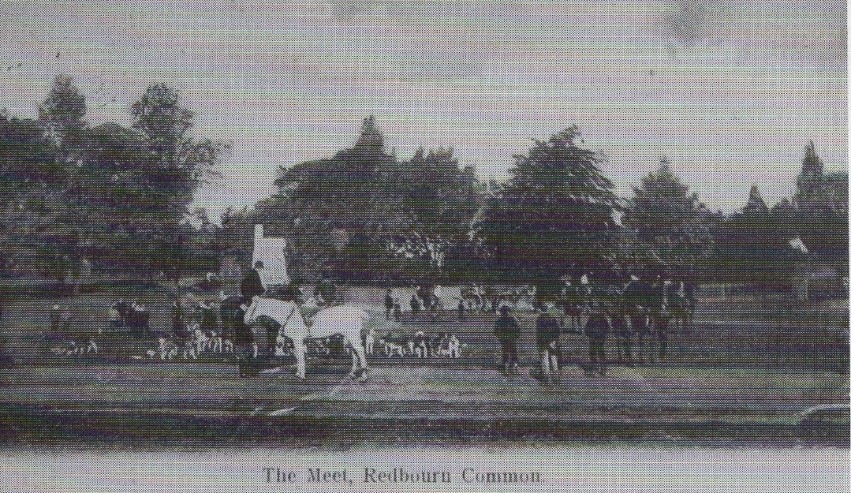
There is record of a pack of hunting dogs being kept at Redbourn as early as 1725. Certainly by 1745, when the Duke of Cumberland built the hunting lodge, hunting was a regular feature in the area. Maps of Hertfordshire, dating to this time include Redbourn as a hunting area, and by 1823, when The Elms on St. Albans Road was up for sale, specific mention was made of the good hunting available in the area.
Since around the start of the 20th century, the local hunt was the Aldenham Harriers who held their Boxing Day hunts from the Common. There were between 30-50 members on horseback. They hunted twice a week from the middle of October to the middle of March, from St.Albans to Hitchin, Ashridge and Barton LeClay. There were two Masters of the hunt. Mr G.H Hartop of Beaumont Hall was one of the early Masters. He was also a competitor at the point to point races held at Friars Walsh. Hunts were held from about 1890 until about 1964 and attracted large crowds. Hunting was done with beagles for hares and sometimes the foxhounds went after foxes. Stag hunting also went on until during the 19th century and the animal would have been released and hunted in the fields around the village. The hunt originally met opposite the old boy’s school, but after the erection of the War Memorial, they moved to near the cricket pitch. The hunts ceased after protest from Animal Rights activists in the 1970’s.
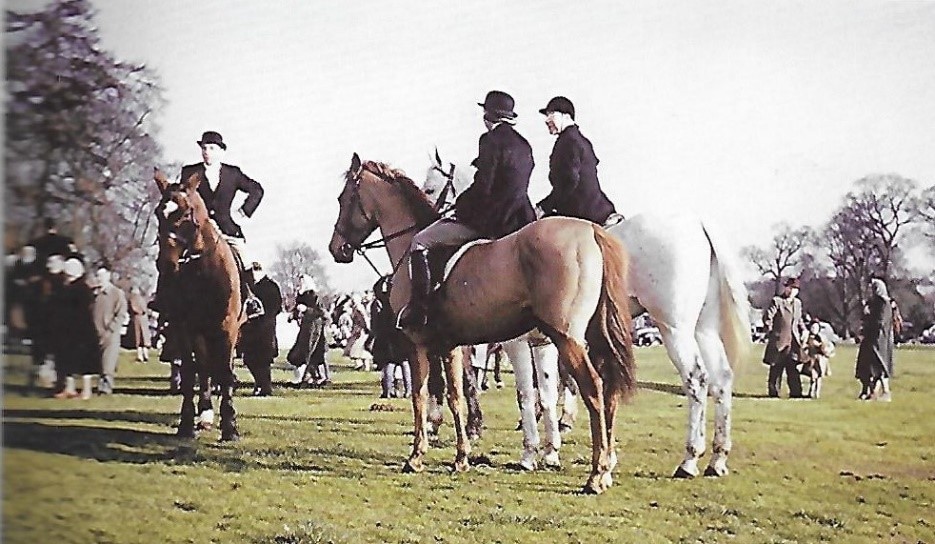
Archery
The Common or part of it was probably the location of archery practice for men in the medieval village of Redbourn. From 1252, all Englishmen between the ages of 15 and 60 were ordered by law to equip themselves with bows and arrows. From 1363 they had to practise their longbow skills every Sunday. This took place at the ‘Butts’. These were man-made earth mounds, clad with turf and given a rounded roof. They would have been a constant feature of the landscape. They presence can still sometimes be traced in local names (such as Newington Butts in South London). However the Redbourn ‘butts – Butt Field, Long Field Butt, Clay butts and St Mary’s butt have a different origin. They were irregular shaped areas at the edges of a field that were difficult to plough.
In the village we know that there were areas designed for archery practice, probably on the Common as in 1621 a court order exists ‘to the inhabitants of Redbourne for that they have suffered their butts to be in decay by the space of three months last past’ The village was fined 20 shillings, a large amount of money for the time.
Cycling
The “Fete De Velo” is held in June in the village on closed roads around the Common. The racing is part of an all-day event within the village and caters for all ages and abilities. There are races for children of all ages on a one-kilometre circuit that is closed to traffic all day so the cyclists can have their fun. After that, the grown-ups take to the roads for a series of races. The senior race, for second, third and fourth category riders, attracts a full field.
The event is the brainchild of Simon Barnes, the former owner of the Plowman Craven professional racing team, which counted Malcolm Elliott and Tony Gibb among its leading riders. Simon opened The Hub, a cycling-themed café on the corner of the High Street and Fish Street. The café also had a bike maintenance workshop at the back and business took off so sharply that Simon, to cope with the increase in business, opened The Bike Loft, a bike shop, at the other end of the High Street. While the racing is going on, the Common is a hive of activity with plenty of stalls, food to buy, live music, a DJ and bikes for children to ride on the grass. Over the course of the day, the event attracts more than 1,500 people.
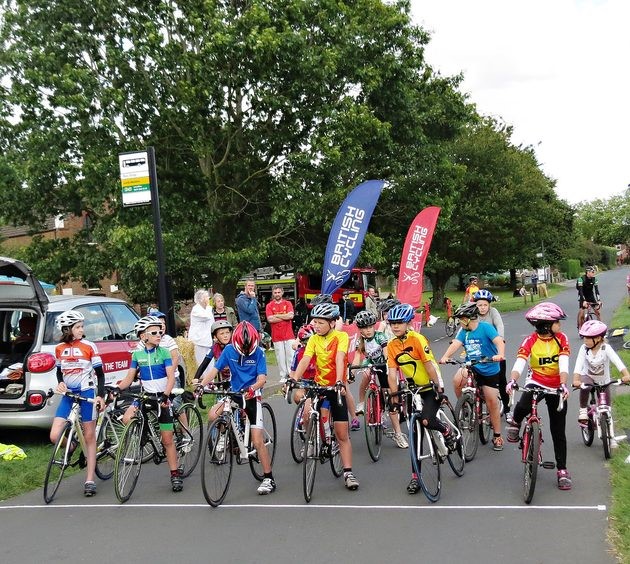
Fairs
In 1638, King Charles 1 granted Redbourn he right to hold a weekly market. This was to take place on Tuesday. The same grant allowed the holding of three fairs a year, the Wednesday after Easter, the 20th July and St Luke’s Day – 18th October. These fairs lasted for a week and each day was allocated to different trading. So Sunday was Racehorses, Monday was Hunters, Tuesday was Cart horses, Wednesday was cattle and Thursday was sheep. The area of the Common was used near to Cumberland house. By the start of the 20th century, the livestock fairs had been largely replaced by ‘Pleasure Fairs’ and after the Second World War by the Fun Fairs we have on the common today.
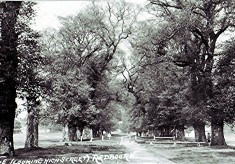
The road to Lybury Lane (left to right) from Redbourn Common near The Cricketers P.H. crossed the celebrated avenue of elms, in the early 1900’s.
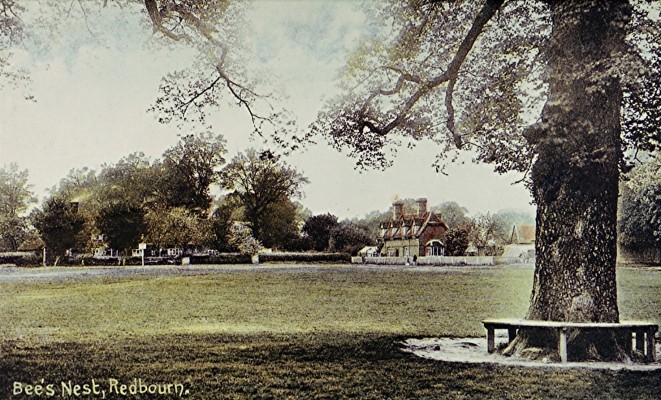
Redbourn Common looking towards Lybury Lane from the Avenue, c.1910
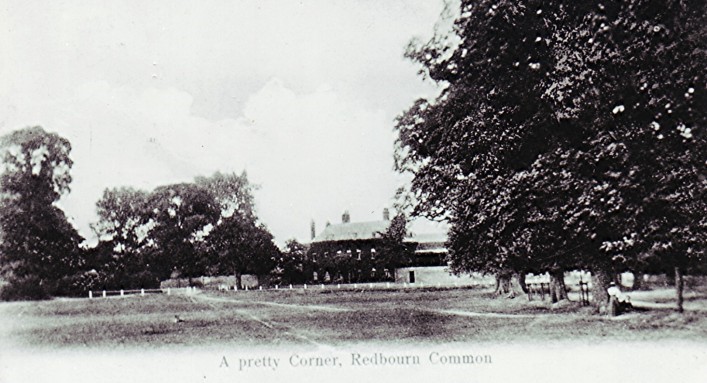
Looking from Redbourn Common, we see Cumberland House and the avenue of elms around 1910.
Subhash Patel
I lived in Heybrigge Close, North Common for 15 years before emigrating to Australia.in October 2023. This was the best time of my life in England. Redbourn is a lovely village and very friendly people. I used to enjoy the Classic Car Show, Cricket and the fire works on the Guy Fawkes Night. on The Common.
Lora Tonga
I’m looking to have my 4yr olds 5th party on the common who do I contact pls
Jean Godfrey
I have thoroughly enjoyed reading this interesting history of the common, it certainly has been a busy place enjoyed by many people of Redbourn down the ages. It’s wonderful to walk round the common especially during these difficult times and lovely to meet and chat to others enjoying it too.
Thank you Joyce, your research has given us an opportunity to look back at our wonderful common through the ages.